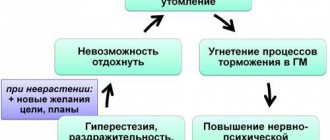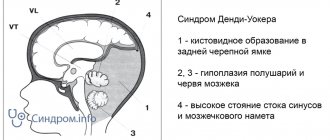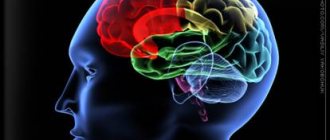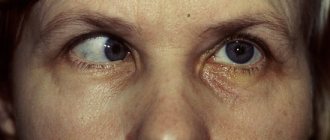The information on this website is not intended to replace personal contact with a qualified health care professional and is not intended to be used as medical advice. Please read our full medical disclaimer.
Exploding head syndrome is a type of parasomnia. Parasomnia is associated with adverse events that accompany sleep. Exploding head syndrome may seem painful and even scary, but it is not. This is a disorder in which a person hears a loud noise right before going to sleep. The noise the patient hears is imaginary. Patients describe the noise as being akin to a loud explosion. This loud bang appears to have originated in the patient's head. While this often happens when a person is about to fall asleep, it can also happen when a person wakes up in the middle of the night.
What do people with EHS hear?
Some patients describe the sound they hear as being like the sound of cymbals hitting. There are also those who compare the sound of an exploding bomb. Sometimes the sound is not as loud and less disturbing. There are times when a sound is accompanied by a flash of light. Some patients experience twitching along with a loud sound. An EHS episode is often painless. However, there are some patients who have reported feeling sudden painful blows to the head during an attack.
The intensity of the sound makes some patients think they are having a stroke. Episodes of exploding head syndrome may vary in frequency. This may happen very rarely. There are also cases where the patient experiences several episodes in just one night. Some patients experience multiple attacks over several nights. Several weeks or months may follow without a single episode before episodes of EHS occur again.
Characteristic
Perception is a cognitive activity that results in the formation of sensory images that are interpreted into an object using the senses. Cognitive activity is active in nature and is not considered as a passive recording of impressions. Perception is the process of forming an image from impressions. The process includes the following steps:
- Perception (primary selection of impressions from the general mass).
- Apperception (comparing a new image with existing similar objects stored in memory).
- Categorization (moving an image to a specific group of similar objects).
- Projection (supplying an image through thought with additional details that remain beyond the limits of perception by the senses).
Auditory hallucinations are a disorder that reflects the perception of a non-existent sound stimulus, which is accompanied by a lack of critical assessment of the phenomenon. Patients perceive such phenomena as existing in reality, and not fictitious. Attempts to explain to the patient that sound stimuli are imaginary cause reactions of irritation, aggression and protest.
Sound hallucinations that appear before bed and throughout the day are the main symptom of mental illness. Acoasms are elementary, simplest sound non-speech phenomena that are perceived by the patient as real, including ringing, breathing, noises, and tapping. Phonemes consist of verbal components, represented by words, calls, sighs, laughter, crying, exclamations.
There are also complex and simple, daytime and nighttime hallucinations. The simple form is represented only by the sound phenomenon. In complex forms, clinical manifestations include additional stimuli - auditory, tactile, olfactory. Complex hallucinations may consist of a voice component and a video sequence. The patient can simultaneously see an imaginary person, hear his voice, smell him, and feel touch.
Music belongs to a separate group, which also includes singing - solo and choral. Musical hallucinations usually accompany schizophrenia, psychoses of alcoholic and epileptic origin. Hypnagogic forms occur in the head when falling asleep or waking up. The duration of imaginary sound stimuli is several seconds or minutes. In most cases we are talking about pseudohallucinations.
The patient becomes aware of the true nature of sound phenomena. The hypnotic form occurs with a frequency of about 37% of the population, often correlates with narcolepsy (a pathology characterized by daytime sleepiness with episodes of sudden falling asleep). True hallucinations are characterized by vividness and realism.
Often, imaginary sound stimuli, despite their irrational content and meaning, are more realistic for the patient than the surrounding reality. When real and fictitious sound phenomena contradict each other, the patient is in extreme confusion, which means that there is a pronounced conflict between the conscious and spontaneous, unconscious.
What are the symptoms of exploding head syndrome?
A person may have exploding head syndrome if they:
- Imagines a loud noise or explosion in the head. The patient may hear the noise before falling asleep. Some patients hear this immediately after waking up in the middle of the night.
- The loud explosion that the patient hears does not cause pain. Although the sound of the explosion is really loud, it does not cause any harm. However, the sound associated with EHS can be quite startling.
- An EHS episode suddenly awakens the patient. The patient also often experiences a feeling of fear along with any of the above episodes.
In addition to the symptoms listed above, an episode of exploding head syndrome can also cause:
- Increased heart rate as a result of being startled by a loud plosive sound.
- Feelings of anxiety or fear. People often associate loud explosive sounds with danger. This may explain why a patient may exhibit feelings of fear upon hearing a loud explosion sound caused by EHS.
- Muscle twitching
Why does this feeling happen?
In a healthy person, when exposed to certain factors, tinnitus and pulsation may suddenly occur. The head may feel light or, conversely, feel unusually heavy. This most often happens with sudden fear, stress or severe physical strain. This condition causes the heart rate to increase and the arteries to narrow at the same time. Therefore, blood, pushing under pressure through the vessels, causes them to pulsate.
Such headaches can occur as a reaction to changing weather conditions, hormonal fluctuations in women, due to a sedentary lifestyle, or due to weakened immunity after serious illnesses. Hypothermia or even excessive consumption of cold foods can also cause throbbing in the head. Often this feeling occurs as a result of severe overwork, accumulated fatigue or emotional overstrain.
What Causes Exploding Head Syndrome?
Researchers have not yet determined the exact cause of exploding head syndrome. Some researchers believe this is a neurological issue. Some doctors believe that this disorder is a result of fear, stress and anxiety. Another possible source of this disorder is minor seizures in the patient's temporal lobe. Some believe that loud explosions are the result of parts of the patient's middle ear suddenly shifting.
There is also the possibility that the loud noise the patient hears is not the result of exploding head syndrome. This could be the result of another disorder or health condition. There is a possibility that the loud bang that the patient hears is a side effect of the medication he is taking. It can also be the result of drug or alcohol abuse. Also, the possibility that this disorder is a consequence of another sleep disorder cannot be discounted.
There is no reliable data indicating how many people suffer from exploding head syndrome. This parasomnia is more common in women than in men. There is no indication that it is more common in a particular age group. Exploding head syndrome can begin at any age . There are reports that it can appear in children as young as 10 years of age. The average age when it first appears in patients is 58 years.
How is this disorder diagnosed?
A careful review of a patient's medical history can help determine whether he or she actually suffers from exploding head syndrome. This may also rule out the possibility that symptoms, even if they indicate EHS, are related to another sleep disorder.
Before visiting a doctor for a consultation, the patient can keep a sleep diary. A sleep diary can help chart a patient's sleep patterns. It can also help the doctor determine whether part of the patient's sleep pattern is causing the problem. When making entries in a sleep diary, it is important for the patient to be as detailed as possible. This may help your doctor make a diagnosis.
There are no tests for exploding head syndrome. Your doctor may recommend an overnight sleep study or polysomnogram. During a sleep study, a doctor or medical technician watches the patient while he or she sleeps. A polysomnogram uses other diagnostic tools that can monitor a patient's heart rate, breathing rate, and brain waves during sleep. There are also sleep studies, where the doctor uses a video camera to record the patient's movements while they sleep. A sleep study can help a doctor determine if another sleep disorder is causing the loud explosions a patient hears.
Treatment of sleepwalking and other parasomnias in Samara
The First Neurology clinic has accumulated significant experience in the treatment of parasomnias.
More than 10 high-tech techniques are used:
- Different options for transcranial electrical stimulation: Micropolarization of the brain, MDM therapy, electrosleep;
- Transcutaneous electrical neurostimulation "Cefaly";
- Transcranial magnetic therapy;
- Individual psychotherapy;
- Magnetic stimulation of the neuromuscular apparatus of the pelvic floor – correction of nocturnal enuresis;
- Carboxytherapy;
- Acupuncture;
- Chronomagnetic therapy "Multimag";
- Mesoinjection therapy of the collar and lumbar zones with the introduction of vascular protectors;
- Ozone therapy.
Timely and effective treatment of sleepwalking and other parasomnias improves the quality of night sleep, increases daytime activity and performance. A child and an adult can study and work in a team, without being embarrassed by “nightly episodes” and communicate comfortably with peers.
How is exploding head syndrome treated?
There are several treatments for exploding head syndrome. These treatments are more focused on eliminating the possible cause of the loud noises. An example would be patients who experience symptoms of EHS during sleep deprivation. If this is the case, then the right course of action is to try to get enough sleep every night. The ideal sleep duration for an adult is 6 to 8 hours.
There are times when exploding head syndrome is a result of stress or anxiety. In this case, the patient should try other means of relaxation. Relaxation techniques can help relieve stress. There are also daily activities that can help relieve stress. Examples: short walks, light exercise, or reading before bed. Taking a warm bath before bed can also help relieve EHS symptoms.
Medications may also help relieve symptoms of EHS. The patient may benefit from medications that affect neurological activity. Clomipramine, an antidepressant, is useful in relieving symptoms of EHS.
Anticonvulsants and tricyclic antidepressants may help the patient. There are also indications that using calcium blockers may help relieve the symptoms of EHS. If a patient believes that medication may help prevent an attack, the physician and patient should carefully discuss possible treatment.
There are cases where the disorder is a result of taking another medication. When EHS is the result of another health problem, the patient should not immediately stop taking the prescribed medications. There are medications with side effects. If a patient needs to stop taking a particular medication, they should gradually stop taking the medication. It is also important to consult with your doctor before stopping the drug. A doctor can help create a plan that will allow a patient to gradually reduce the dosage and frequency of a particular medication.
Exploding head syndrome is a parasomnia associated with the patient's hearing. Only the patient hears the loud noise. This can lead to lack of sleep. The person may be anxious to go back to sleep out of fear of another loud explosion. This can lead to lack of sleep. Depending on what causes exploding head syndrome, there are many treatments available.










